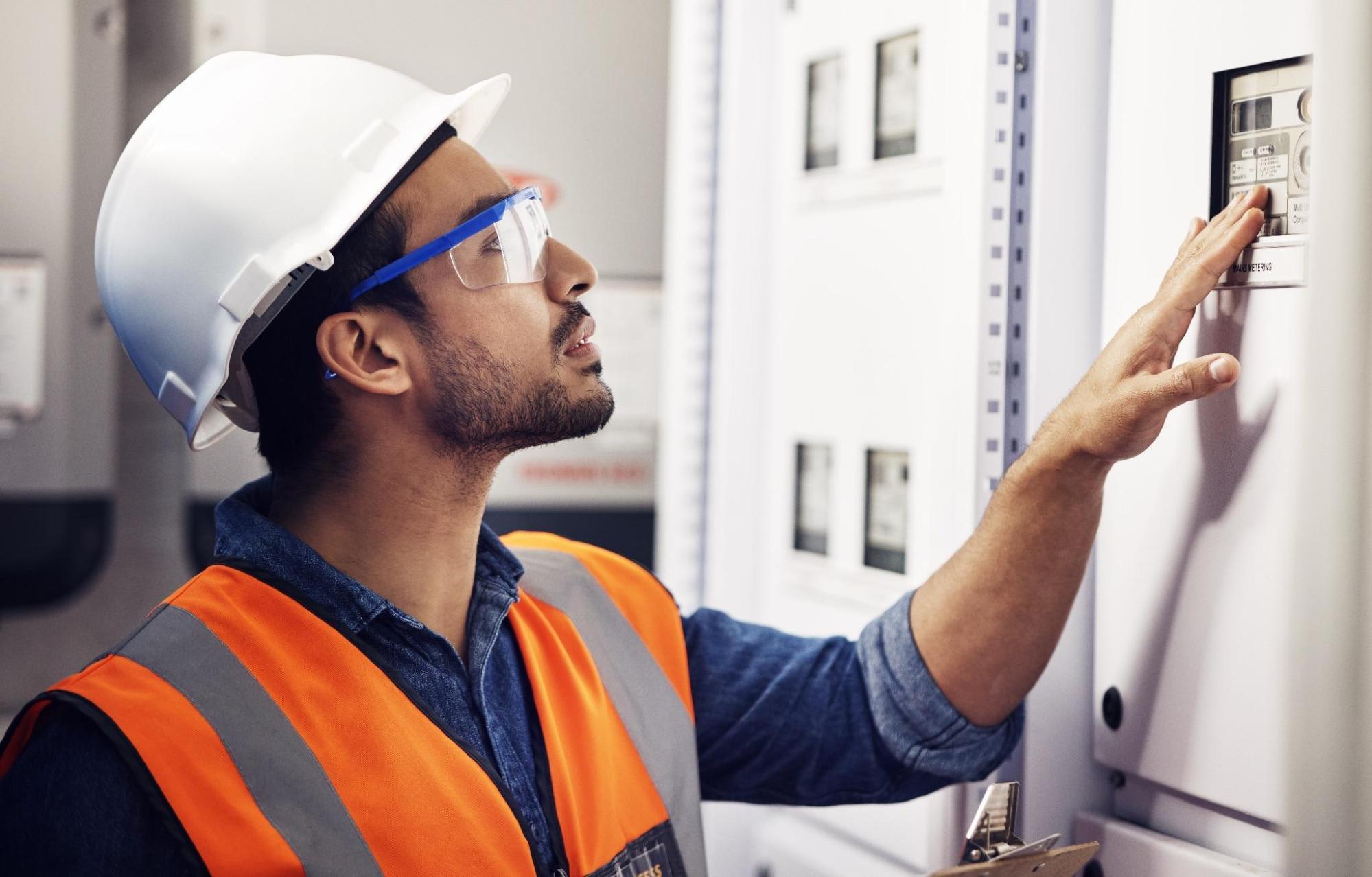- Published 9 Jan 2024
- Last Modified 6 Mar 2024
- 5 min
Best Practices for Switch Maintenance in Industrial Settings
Everything you need to know about crimp tools, including the types, the best brands, and how to use them.

Switches are an often understated yet crucial component of industrial applications. Their significance lies in their ability to control and manage the operations of complex machinery and systems. Industrial switches are designed to withstand harsh environments and provide reliable performance under extreme conditions.
However, like any other piece of equipment, they require regular maintenance and timely upgrades to ensure their functionality and to extend their lifespan. This article explores the causes and consequences of switch malfunctions and failures, as well as the best practices for maintaining and upgrading switches in industrial settings.

Understanding the Role of Switches and Their Maintenance in Industrial Settings
Cause of Switch Malfunctions or Failure
Switches in industrial environments are fundamental to operational integrity, but they are not immune to failure. Understanding the common causes of switch failures is key to developing effective maintenance strategies. Here are several factors that can lead to switch malfunctions in industrial settings:
- Mechanical Wear and Tear: Repeated use can cause physical deterioration of switch components, leading to failure.
- Environmental Factors: Exposure to dust, moisture, chemicals, and extreme temperatures can damage switches.
- Electrical Overloads: Surges or spikes in power can lead to switch burnout or component damage.
Consequences of Switch Malfunctions or Failure
The failure of a switch can have significant implications including:
- Increased Downtime: Malfunctioning switches can lead to unexpected halts in production or operation, causing significant downtime.
- Safety Hazards: Faulty switches can create unsafe conditions, leading to accidents or endangering personnel due to electrical malfunctions or failures in emergency stop mechanisms.
- Costly Repairs and Replacements: Neglecting switch maintenance can result in severe damage, necessitating expensive repairs or full replacements.
- System Failures: Switch failures can cause cascading effects throughout an industrial system, potentially leading to widespread operational failures.
The potential ripple effects can disrupt the entire industrial process, making it essential to maintain switches properly to avoid malfunctions.
Switch Maintenance Best Practices and Proactive Interventions
In high-power applications, switches play a critical role in mitigating risks by controlling the flow of electricity and preventing overloads. Maintaining these switches is vital for ensuring the safety of both the equipment and the personnel. Proactive maintenance strategies can improve system reliability by reducing downtime and increasing operational uptime. Implementing these strategies is key to ensuring that switches function correctly for as long as possible.
1. Scheduled Inspections
Regular inspections are a crucial part of maintaining industrial switches. These inspections allow technicians to identify early wear and tear that might not be immediately apparent. They include both visual examinations for any physical damage and electronic testing for operational accuracy.
Predictive maintenance, using techniques like <u>vibration analysis</u>, <u>thermal imaging</u>, and oil analysis, helps identify potential issues before they turn into actual failures. This approach allows for timely repairs, keeping minor problems from developing into major, more expensive ones, and helps in maintaining the longevity of switches.

2. Calibration and Adjustment
Calibration and adjustment are critical steps in maintaining the precision of industrial switches. Over time, switches may drift from their original set points, leading to inaccuracies that can affect the entire system's efficiency.
Regular calibration ensures that switches respond accurately at the correct thresholds, maintaining the system's overall integrity. Adjustment may involve tuning the switch to compensate for environmental changes or wear. These refinements are vital for preserving the switch's functionality and preventing errors, which, if left unchecked, could escalate into full-blown system malfunctions.
3. Recognising Signs of Switch Malfunction or Failure
Recognising the early signs of switch malfunction or failure is a key aspect of maintenance.
Early indicators often manifest as subtle anomalies, such as unexpected noises during operation, such as clicks or grinding sounds, which can indicate mechanical issues. Inconsistencies in performance, such as delays in activation or deactivation, can signal electrical problems. Physical signs of damage, such as corrosion, cracks, or discolouration, might suggest environmental stress or electrical issues.
By training personnel to identify these early warning signs, organisations can implement corrective measures swiftly, minimising the impact on operations and preventing the faults from progressing into significant disruptions.
4. Upgrade to Modern Switch Technologies
Newer switch technologies offer advanced features such as improved durability, better performance in extreme conditions, and smart capabilities for integration with industrial IoT systems. These advancements can significantly enhance operational efficiency.
Deciding between repairing an existing switch or replacing it with a new one requires a thorough cost-benefit analysis. Factors such as the age of the switch, the cost of downtime, and the benefits of new technologies must be considered.
Explore RS’ Range of Switch Products
RS offers the tools and expertise needed to maintain and upgrade your industrial switches. From <u>push-button switches</u> for simple on-off operations to <u>rotary switches</u> for complex control systems, our <u>switch product range</u> is extensive. We offer innovative solutions to help you tackle the challenges of procurement, inventory, and maintenance.
Partner with us to ensure your industrial environment is secure and runs efficiently. RS business account holders with an ABN enjoy free delivery on orders over $40 (excluding GST). Contact RS today to enhance your operational efficiency and protect against switch-related failures.
Switches and Switch Maintenance Product Brands
RS PRO
RS PRO offers a versatile range of switch maintenance products, ideal for various industrial applications. Their selection includes high-quality switches and tools necessary for the upkeep and operation of these components. Known for their reliability and affordability, RS PRO products include durable switches for harsh environments, precision maintenance tools, and a variety of accessories essential for ensuring the longevity and efficiency of your switch systems.
Eaton
Eaton specialises in advanced switch solutions designed for reliability and efficiency. They provide an extensive range of industrial switches, including safety switches, managed switches, and switch disconnectors. Eaton also offers specialised maintenance kits and diagnostic tools, which are essential for the upkeep of these high-end switch systems, ensuring they operate effectively in various industrial environments.
Siemens
Siemens provides a comprehensive range of switches and maintenance tools, renowned for their durability and precision. Their portfolio includes a range of switches such as safety switches, industrial Ethernet switches, and load break switches. Siemens also provides advanced maintenance solutions, including diagnostic tools and replacement parts, all engineered with the precision and quality that Siemens is known for.
Related links
- A Guide to Temperature Controllers in Industrial Processes
- Enhancing Workplace Safety Through Best Practices
- Drum Heaters
- Float Switches for Home Ponds in Australia
- A Guide to Mechanical Tools: From Hand Tools to Pneumatics
- Mastering Key Switches: Types and Best Practices
- The Complete Guide to Industrial Weighing Scales
- The Complete Guide to Toggle Latches